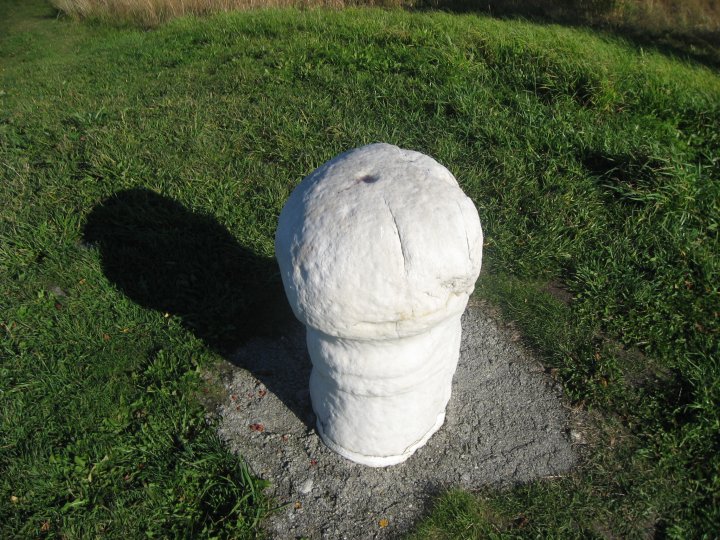
Remains of shipgrave at Gleinodden.

Remains of shipgrave at Gleinodden.

Remains of bronze-age mound at Gleinodden.






The mound at Glein with the white stone at the top.
Close by Vardehaugen (200 m.) is the gravesites at Gleinneset . You’ll see remains of viking- and bronze-age burials. Most of it lies in a pine-plantation (that my local informant said was going to be cut down soon). The bronze-age-mound has a magnificant location by the sea. It may be strange today, but Dønna was a very central place just a hundred years ago, when all traffic was by sea. The boat-grave contained a few remains of iron and a small bell, the ship must have been about 2 m. wide and 7 m. long. The long mound itself was about 20 m. The other mounds are round. In 1952 about 30 mounds of various sizes were counted. In 1955 14 were excavated.
Glein is on the island of Dønna. You have to take the ferry from Sandnessjøen, Glein is 2 miles (20 km) from the ferry-landing at Bjørn.
The mound is called Val’haugen or Vardehaugen, built of stone with a coat of earth. It was partly demolished and the stone and gravel used for road-building at the end of the 18th century. The eastern side contained a burial-chamber covered by two large stone-slabs. In the chamber were the skeletons of a man and a horse, along with equipment such as a battle-axe and a sword. It is possible that the mound contained one or more stone-kists as well. The mound was restored in 1978 and is about 30 meter in diameter and 4,5 meter high.
The white stone that stands on the top (pikk-steinen as it’s sometimes called in norwegian, translates into prick-stone in english I guess), is one of several phallic stones found in Norway. A list as of 2005 is found on the Arkeologi i nord-blog and totals 77. The one at Glein is the biggest at 90 cm. It has been suggested that they were used in fertility-cults connected to the seagod Njord (Solberg, 2001).
This particular stone was found by W.F.H. Christie on the beach close by and brought to Bergen Museum in 1831. A copy stood on the mound until the original was brought back in 200?.
Reference: Bergljot Solberg: Hellige hvite steiner – spor av fruktbarhetskult i Norge In Kjønn – erotikk – religion, 2001 (Bergen Museums skrifter; 9).